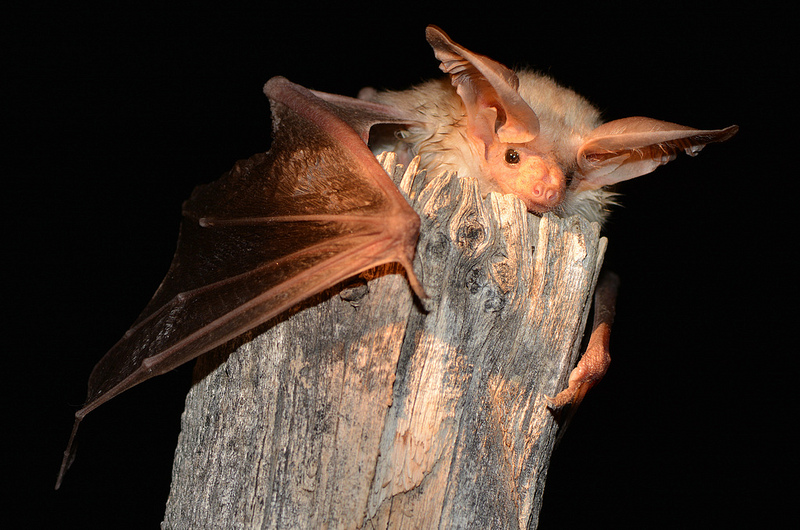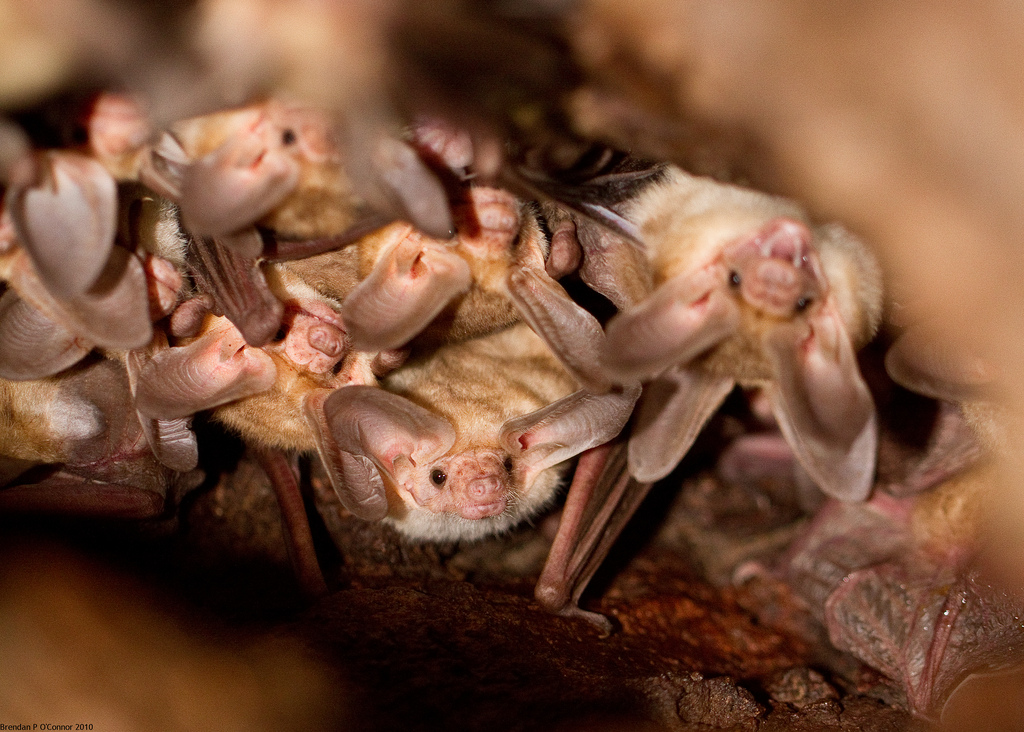Classification
In English, Antrozous pallidus means a light-colored, big-eared, cave-residing bat.
Domain - Eukarya
Kingdom - Animalia
Phylum - Chordata
Class - Mammalia
Order - Chiroptera
Family - Vespertillionidae
Genus - Antrozous
Species - Antrozous pallidus
Eukarya
The pallid bat is a member of the domain Eukarya because its cells
have a true nucleus where the genetic information is stored. Its
cells also contain membrane-bound organelles.
Animalia
The pallid bat is a member of the kingdom Animalia because they are
multicellular, and as they undergo metamorphosis their body plan
becomes fixed. The pallid bat is motile (able to move
independently). They are also heterotrophic (consume other organisms
for food) and they lack cell walls.
Chordata
The pallid bat is a member of the phylum Chordata because they have
bilateral symmetry and are triploblastic (contain 3 tissue layers).
They are also deuterostomes which is when the blastopore develops
into the anus first then the mouth. Chordates also possess a
notochord and a hollow dorsal nerve chord.
Mammalia
The pallid bat is a member of the class Mammalia because it has
hair and mammary glands for milk production in the female. Mammals
are also endothermic, which means they regulate their body
temperature internally.
Chiroptera
The pallid bat is a member of the order Chiroptera because their
forelimbs have evolved webbing to allow for true flight (like all
species of bats). In fact, bats are the only mammals that are
capable of true and continuous flight.
Vespertillionidae
The pallid bat is a member of the family Vespertillionidae because
it is considered a Vesper bat, meaning that it is an evening bat or
common bat. Also, a common trait among Vesper bats is the fact that
they mainly feed on insects. This is the most diverse and well-known
bat family.
Antrozous
The pallid bat is a member of the genus Antrozous because
they have large ears and they live in caves. Also, most bats that
are in the genus Antrozous live in temperate regions.
Antrozous pallidus
The pallid bat is classified in the species Antrozous pallidus
because they are known for their ears being large, pale and wide.
Their fur is typically very light in color, and their eyes tend to
be larger than most other species of bats. Pallid bats are unique in
that they have the ability to regulate their body temperature during
winter.
Figure 1. Phylogenetic tree showing the relationship between the orders from the class Mammalia. This tree was created based on using the maximum-pseudolikelihood coalescent method MP-EST with multilocus bootstrapping. Antrozous pallidus is part of the order Chiroptera and most closely related to the orders Prissodactyla, Carnivora, and Cetartiodactyla.
Figure 2. Phylogenetic tree of the Antrozoini clade taken from a phylogram of order Chiroptera. A Bayesian analysis of the combined ribosomal mitochondrial DNA and nuclear DNA, dentin matrix acidic phosphoprotein I, recombination activation gene II, protein kinase C, iota, signal transducer and activator of transcription 5A, and thyrotropin gene regions was used to create this phylogram. A. Pallidus makes up the top three branches of this tree with each group coming from various regions in the United States.
Return Home Go to Adaptation





